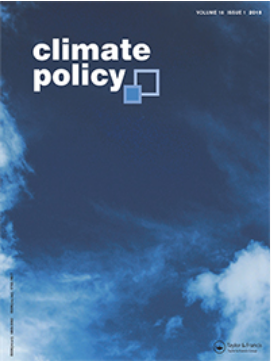The contribution of forest carbon credit projects to addressing the climate change challenge
by Wytze van der Gaast, Richard Sikkema and Moriz Vohrer
Climate Policy, Volume 18, 2018 - Issue 1
This article addresses the question of how forestry projects, given the recently improved standards for the accounting of carbon sequestration, can benefit from existing and emerging carbon markets in the world. For a long time, forestry projects have been set up for the purpose of generating carbon credits. They were surrounded by uncertainties about the permanence of carbon sequestration in trees, potential replacement of deforestation due to projects (leakage), and how and what to measure as sequestered carbon. Through experience with Joint Implementation (JI) and Clean Development Mechanism (CDM) forestry projects, albeit limited, and with forestry projects in voluntary carbon markets, considerable improvements have been made with accounting of carbon sequestration in forests, resulting in a more solid basis for carbon credit trading. The scope of selling these credits exists both in compliance markets, although currently with strong limitations, and in voluntary markets for offsetting emissions with carbon credits. Improved carbon accounting methods for forestry investments can also enhance the scope for forestry in the Nationally Determined Contributions (NDCs) that countries must prepare under the Paris Agreement.
Policy relevance
This article identifies how forestry projects can contribute to climate change mitigation. Forestry projects have addressed a number of challenges, like reforestation, afforestation on degraded lands, and long-term sustainable forest management. An interesting new option for forestry carbon projects could be the NDCs under the Paris Agreement in December 2015. Initially, under CDM and JI, the number of forestry projects was far below that for renewable energy projects. With the adoption of the Paris Agreement, both developed and developing countries have agreed on NDCs for country-specific measures on climate change mitigation, and increased the need for investing in new measures. Over the years, considerable experience has been built up with forestry projects that fix CO2 over a long-term period. Accounting rules are nowadays at a sufficient level for the large potential of forestry projects to deliver a reliable, additional contribution towards reducing or halting emissions from deforestation and forest degradation activities worldwide.

